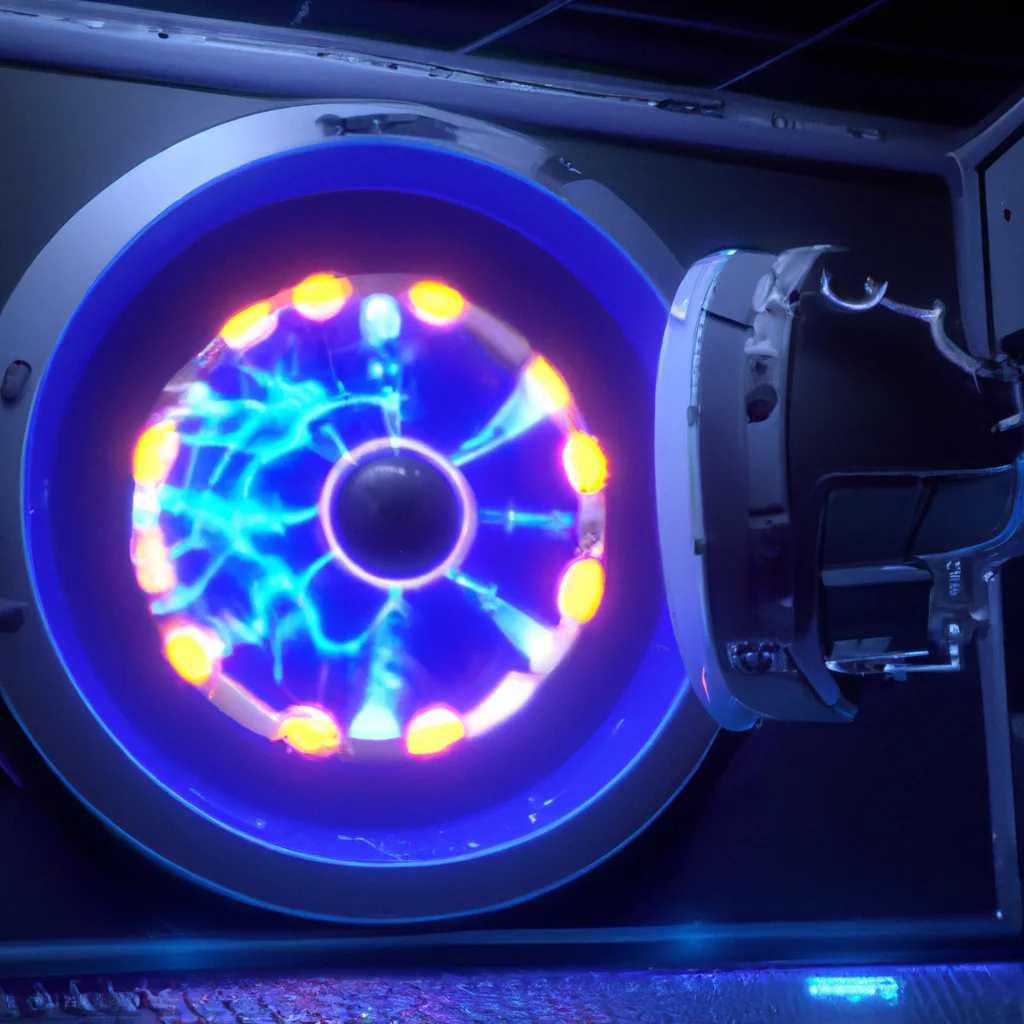How does a cyclotron work?


How does a cyclotron work?
A cyclotron is a type of particle accelerator used in nuclear physics to accelerate charged particles, such as protons, to high energies. Invented by Ernest O. Lawrence in 1931, the cyclotron uses a magnetic field and a radio frequency electric field to accelerate particles in a circular path. This article will explain how a cyclotron works, including its components, principles, and applications.
Ion Source
The first component of a cyclotron is an ion source that produces the charged particles to be accelerated. The ion source can be a hot filament, a plasma discharge, or an electron cyclotron resonance source. These sources create ions by stripping electrons from atoms or molecules. The ionization process produces a beam of positively charged particles that are guided into the cyclotron’s magnetic field.
Magnetic Field
The magnetic field is the main component of a cyclotron. It consists of a series of magnets arranged in a circular pattern. The magnets produce a magnetic field that is perpendicular to the plane of the particle beam. The magnetic field causes the charged particles to move in a circular path, known as a spiral trajectory.
Accelerating Voltage
The accelerating voltage is the electric field that is used to increase the kinetic energy of the particles. The voltage is applied to the Dees, which are two metal electrodes that are shaped like a “D.” The Dees are connected to a high-frequency oscillator that generates an alternating voltage. The voltage alternates between the Dees, causing the charged particles to accelerate as they move from one Dee to the other.
Radio Frequency
The radio frequency is the frequency of the electric field that is applied to the Dees. The frequency is tuned to the resonant frequency of the particles’ circular motion. This resonance causes the particles to gain energy from the electric field, which increases their speed and radius of motion. The frequency of the electric field must be adjusted as the particles gain energy to maintain resonance.
Beam Current
The beam current is the number of charged particles that are accelerated through the cyclotron at any given time. The beam current is controlled by adjusting the intensity of the ion source. The higher the beam current, the more particles are accelerated through the cyclotron, which results in a higher beam intensity.
Beam Extraction
The final component of a cyclotron is the beam extraction system. This system extracts the accelerated particles from the cyclotron and directs them to their target. The beam extraction system can be a simple aperture or a more complex system that uses magnets or electrostatic lenses to focus the beam.
Applications of Cyclotrons
Cyclotrons have many applications in physics, medicine, and industry. In nuclear physics, cyclotrons are used to investigate the properties of atomic nuclei by accelerating particles to high energies. In medicine, cyclotrons are used to produce isotopes for medical imaging and radiation therapy. Isotopes produced by cyclotrons are used in positron emission tomography (PET) scans to diagnose and treat cancer. Cyclotrons are also used in ion beam therapy, a type of radiation therapy that uses high-energy particles to destroy cancer cells.
Conclusion
In conclusion, a cyclotron is a type of particle accelerator that uses a combination of magnetic and electric fields to accelerate charged particles to high energies. The cyclotron’s components include an ion source, magnetic field, accelerating voltage, radio frequency, beam current, and beam extraction system. Cyclotrons have many applications in physics, medicine, and industry, including nuclear physics research, medical isotope production, and cancer treatment. Understanding how a cyclotron works is essential to appreciate its many uses and benefits.
Recent Posts
How do I create an engaging and informative online quiz or assessment?
Creating an engaging and informative online quiz or assessment can be a powerful tool for… Read More
What are the most effective methods for managing and reducing work-related stress in the hospitality industry?
Work-related stress is a common issue in the hospitality industry, where employees often face long… Read More
How can I improve my assertiveness and communication skills in a leadership position?
In a leadership position, assertiveness and effective communication skills are crucial for success. Being able… Read More
What are the key elements of a successful employee recognition and rewards program?
Employee recognition and rewards programs play a crucial role in motivating and engaging employees, as… Read More
How do I effectively manage and respond to customer feedback and reviews?
Customer feedback and online reviews play a crucial role in shaping a company's reputation and… Read More
What are the best strategies for effective time management as a stay-at-home parent?
Effective time management is crucial for stay-at-home parents who juggle multiple responsibilities on a daily… Read More